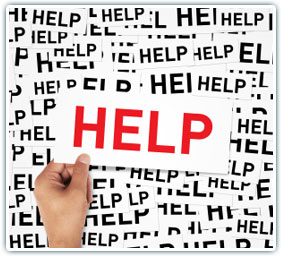
When most people find themselves in crises such as medical emergencies or serious threatening scenarios, the first instinct is often to overreact or panic. Although this is a natural fight-or-flight response, the same basic response that stimulates adrenaline and helps us to escape from danger, a person will best be able to deal with an emergency when calm and rational.
The fact that pilots and emergency personnel spend a lot of time training for crisis situations in order to be able to respond effectively indicates that it is quite possible to maintain composure even in emergency situations. Certain techniques based on meditations in an emergency can be of immense help in these cases especially when practiced before the situations arise. In fact, practiced meditators are generally able to be more present and peaceful even under stressful conditions.
3 Meditation Methods for Emergency Situations
I’ll describe three different meditation-based methods that can help you survive a crisis without losing control of yourself in the situation.
1. The Emergency Stop
One of the simpler, yet more useful techniques, used as a meditation in an emergency is known as the “emergency stop” method. It is also sometimes referred to as “thought stopping” and it has two parts.
First, if you find yourself panicking during a crisis, you sharply say to yourself “stop.” You can say it out loud if the situation permits, but it also works by saying it in your own mind. It helps to imagine yelling the word “stop” in your mind.
Second, once you’ve told yourself to stop, breathe in through your nose slowly, and then hold your breath for a second, before exhaling slowly out through your mouth while relaxing your shoulders. Repeat this again taking another breath in the same way, only this time as you exhale put your attention on relaxing your jaw by separating your teeth slightly. Stay quiet and relaxed by following your breath in through your nose and out through your mouth for the next three minutes if you have the luxury of that much time. Once you’ve calmed down and can think more clearly, continue what you were doing by moving deliberately and calmly to attend to whatever needs your participation.
2. Measured Breathing
Most meditation techniques rely on controlling or following your breathing to establish and maintain a calm state, and this is one of the more important steps in meditation in an emergency. This simple breathing technique can work wonders if you are feeling stressed out or facing a stressful situation.
Here are the steps:
Step 1: Take a deep breath slowly through your nose for a count of five. As you are breathing in, imagine yourself filling first your stomach and then your chest with oxygen and calming energy. This insures that you are filling your lungs.
Step 2: Hold this breath for several seconds or as long as you feel comfortable doing so.
Step 3: Exhale slowly out through your mouth to the count of five. Once again, imagine the air completely leaving your abdomen first and then up through your chest. You can enhance the exhale by pulling your stomach in as you breathe out.
Repeat this process for a few minutes or as long as you need to. Normally you will find that you automatically deepen your relaxation after two or three minutes and then you can continue with normal breathing.
3. Hand Over Heart Method
The third technique of meditation in an emergency is one that can be used anytime throughout the day to find and maintain your inner peace. It consists of simply placing one hand over the middle of your chest and putting the focus of your attention there for a few minutes. Some people put one hand on top of the other and find that this works even better.
This process automatically helps you shift from your mind to your heart and brings in peacefulness. As you are resting there, follow your breath into your heart and imagine breathing in healing light and have it gather in the center of your chest in a sphere of golden light about the size of a baseball. Then imagine this light radiating golden light throughout your body as you exhale. This is an excellent way to stabilize you and center you to enable you to better handle any situation that arises.
These are just three simple applications of techniques derived from meditations that will help in an emergency. Remaining calm and centered is the first important step in effectively handling a crisis situation.

